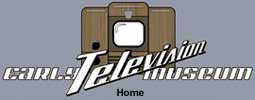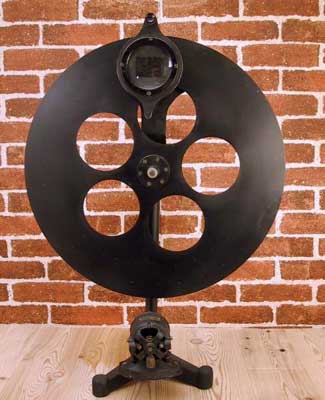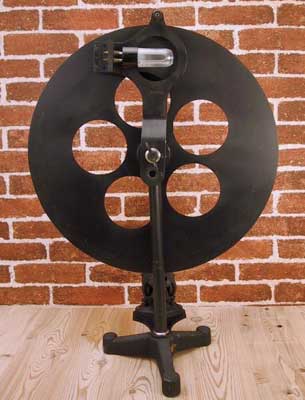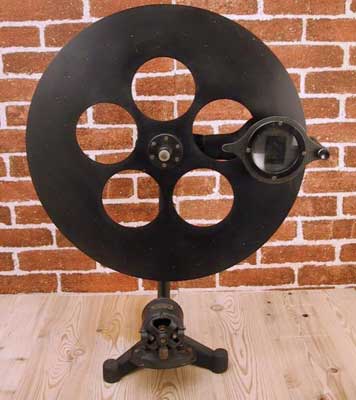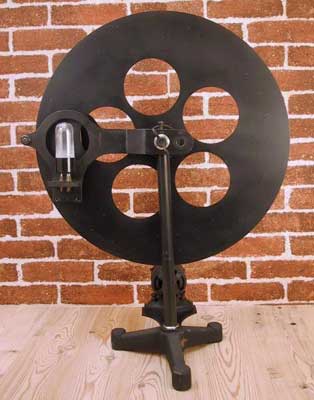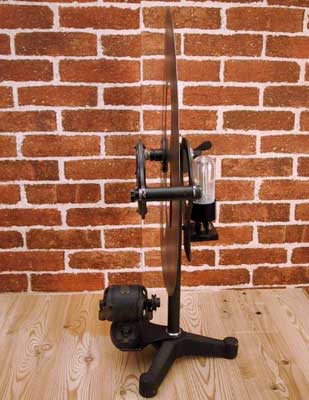Early Electronic Television FumeoThis set was made in Italy about 1930. It is designed to work with the 30 line Baird system, and the 30 line German system by rotating the viewing screen and the neon lamp. The set is stamped "Londro" and "Berlino" to indicate the two systems. The Baird standard was vertical scanning, with a 3:7 aspect ratio, while the German standard was horizontal scanning, with a 1:1 aspect ratio. The disk has two sets of holes.
The top two pictures show the front and rear of the set in the German position. The bottom pictures show it in the Baird position. Side view. The motor is connected to the disk by a belt (missing). There is no synchronization. |
